Insect-Based Food: A (Free) Choice
Abstract
:1. Introduction
2. Theoretical Framework
3. Review Research of Web of Science Articles from 2018–2020
4. Methodology
5. Results of Quantitative Research
- -
- 51.4% of the respondents were male;
- -
- 26.64% were from 18 to 25 years old and 28.5% from 46 to 55 years old;
- -
- 40.65% completed high school and 39.72% have a higher education degree;
- -
- 43.93% earned from EUR 500 to EUR 1000 per person per month;
- -
- 63.55% were currently being paid and were employed;
- -
- 43.93% did not eat protein at breakfast;
- -
- 63.08% ate both kinds of protein (animal and vegetable) at lunch and 57.01% at dinner;
- -
- 44% did not eat protein for dinner.
- -
- Four formative variables: emotional beliefs (with four subfactors: EmoB36–EmoB39), reasonable beliefs (with four subfactors: RatB35–RatB37), reference to others (with four subfactors: RefO42–RefO45), and social acceptability (with five subfactors: AceitSoc46–AceitSoc50).
- -
- Four reflective variables: sensory perception (with three subfactors: PSSensPerc28, PSSensPerc29, and PSSensPerc30), individual belief (with four subfactors: IndB38, IndB39, IndB40, and IndB41), social belief (with four subfactors: SocB51, SocB52, SocB53, and SocB54) and intention (with four subfactors: I1 to I4).
6. Discussion
7. Conclusions
Author Contributions
Funding
Institutional Review Board Statement
Informed Consent Statement
Conflicts of Interest
References
- Childs, C.E.; Calder, P.C.; Miles, E.A. Diet and Immune Function. Nutrients 2019, 11, 1933. [Google Scholar] [CrossRef] [PubMed]
- Searchinger, T.; Waite, R.; Hanson, C.; Ranganathan, J.; Dumas, P.; Matthews, E.; Klirs, C. Creating a Sustainable Food Future: A Menu of Solutions to Feed Nearly 10 Billion People by 2050; Final Report; World Resources Institute: Washington, DC, USA, 2019. [Google Scholar]
- Rzymski, P.; Kulus, M.; Jankowski, M.; Dompe, C.; Bryl, R.; Petitte, J.N.; Kempisty, B.; Mozdziak, P. COVID-19 pandemic is a call to search for alternative protein sources as food and feed: A review of possibilities. Nutrients 2021, 13, 150. [Google Scholar] [CrossRef]
- Motoki, K.; Ishikawa, S.I.; Spence, C.; Velasco, C. Contextual acceptance of insect-based foods. Food Qual. Prefer. 2020, 85, 103982. [Google Scholar] [CrossRef]
- Smetana, S.; Schmitt, E.; Mathys, A. Sustainable use of Hermetia illucens insect biomass for feed and food: Attributional and consequential life cycle assessment. Resour. Conserv. Recycl. 2019, 144, 285–296. [Google Scholar] [CrossRef]
- Aschemann-Witzel, J.; Gantriis, R.F.; Fraga, P.; Perez-Cueto, F.J.A. Plant-based food and protein trend from a business perspective: Markets, consumers, and the challenges and opportunities in the future. Crit. Rev. Food Sci. Nutr. 2021, 61, 3119–3128. [Google Scholar] [CrossRef]
- Ho, I.; Gere, A.; Chy, C.; Lammert, A. Use of Preference Analysis to Identify Early Adopter Mind-Sets of Insect-Based Food Products. Sustainability 2022, 14, 1435. [Google Scholar] [CrossRef]
- Pambo, K.O.; Mbeche, R.M.; Okello, J.J.; Mose, G.N.; Kinyuru, J.N. Intentions to consume foods from edible insects and the prospect for transforming the obiquitous biomass into food. Agri. Hum. Values 2018, 35, 885–889. [Google Scholar] [CrossRef]
- FAO. Edible Insects: Future Prospects for Food and Feed Security; Forestry Paper No. 171; FAO: Rome, Italy, 2013; Available online: http://www.fao.org/docrep/018/i3253e/i3253e.pdf (accessed on 26 March 2022).
- Meyer-Rochow, V.B.; Pinent, M.; Costa Neto, E.M.; Grabowski, N.T.; Fratini, F.; Mancini, S. Editorial: Insects as Food and Feed. Front. Vet. Sci. 2022, 9, 873765. [Google Scholar] [CrossRef]
- Mancini, S.; Moruzzo, R.; Riccioli, F.; Paci, G. European consumers’ readiness to adopt insects as food. A review. Food Res. Int. 2019, 122, 661–678. [Google Scholar] [CrossRef]
- Hartmann, C.; Siegrist, M. Becoming an insectivore: Results of an experiment. Food Qual. Prefer. 2016, 51, 118–122. [Google Scholar] [CrossRef]
- Lorenz, A.R.; Libarkin, J.C.; Ording, G.J. Disgust in response to some arthropods aligns with disgust provoked by pathogens. Glob. Ecol. Conserv. 2014, 2, 248–254. [Google Scholar] [CrossRef]
- Iannuzzi, E.; Sisto, R.; Nigro, C. The willingness to consume insect-based food: An empirical research on Italian consumers. Agric. Econ. 2019, 65, 454–462. [Google Scholar] [CrossRef]
- Junges, J.R.; do Canto, N.R.; de Barcellos, M.D. Not as Bad as I Thought: Consumers’ Positive Attitudes Toward Innovative Insect-Based Foods. Front. Nutr. 2021, 8, 330. [Google Scholar] [CrossRef]
- Fishbein, M.; Ajzen, I. Belief, Attitude, Intention and Behavior: An Introduction to Theory and Research; Addison-Wesley Publishing Company: Menlo Park, CA, USA, 1975; ISBN 0201020890. Available online: http://www.people.umass.edu/aizen/fea1975.html (accessed on 21 December 2010).
- Verneau, F.; La Barbera, F.; Amato, M.; Riverso, R.; Grunert, K.G. Assessing the Role of Food Related Lifestyle in Predicting Intention towards Edible Insects. Insects 2020, 11, 660. [Google Scholar] [CrossRef] [PubMed]
- Chonpracha, P.; Ardoin, R.; Gao, Y.; Waimaleongora-Ek, P.; Tuuri, G.; Prinyawiwatkul, W. Effects of intrinsic and extrinsic visual cues on consumer emotion and purchase intent: A case of ready-to-eat salad. Foods 2020, 9, 396. [Google Scholar] [CrossRef] [PubMed]
- Martins, O.D.; do Paço, A.; Rodrigues, R.G. Influencias en la intención del comportamiento de la lactancia materna-Un estudio exploratorio en el ámbito del marketing social. Innovar 2012, 22, 99–109. [Google Scholar]
- Ajzen, I. The theory of planned behavior. Organ. Behav. Hum. Decis. Process. 1991, 50, 179–211. [Google Scholar] [CrossRef]
- Modlinska, K.; Adamczyk, D.; Goncikowska, K.; Maison, D.; Pisula, W. The effect of labelling and visual properties on the acceptance of foods containing insects. Nutrients 2020, 12, 2498. [Google Scholar] [CrossRef]
- Florença, S.G.; Correia, P.M.R.; Costa, C.A.; Guiné, R.P.F. Edible Insects: Preliminary Study about Perceptions, Attitudes, and Knowledge on a Sample of Portuguese Citizens. Foods 2021, 10, 709. [Google Scholar] [CrossRef]
- David, D.; Lynn, S.J.; Ellis, A. Rational and Irrational Beliefs: Research, Theory, and Clinical Practice; Oxford University Press: Oxford, UK, 2009. [Google Scholar]
- Hartmann, C.; Siegrist, M. Insects as food: Perception and acceptance. Findings from current research. Ernahr. Umsch. 2017, 64, 44–50. [Google Scholar]
- Mancini, S.; Sogari, G.; Menozzi, D.; Nuvoloni, R.; Torracca, B.; Moruzzo, R.; Paci, G. Factors predicting the intention of eating an insect-based product. Foods 2019, 8, 270. [Google Scholar] [CrossRef] [PubMed]
- Castro, M.; Chambers, I.V.E. Willingness to eat an insect based product and impact on brand equity: A global perspective. J. Sens. Stud. 2019, 34, e12486. [Google Scholar] [CrossRef]
- Pérez-Villarreal, H.H.; Martínez-Ruiz, M.P.; Izquierdo-Yusta, A. Testing Model of Purchase Intention for Fast Food in Mexico: How do Consumers React to Food Values, Positive Anticipated Emotions, Attitude toward the Brand, and Attitude toward Eating Hamburgers? Foods 2019, 8, 369. [Google Scholar] [CrossRef] [PubMed]
- Tan HS, G.; van den Berg, E.; Stieger, M. The influence of product preparation, familiarity and individual traits on the consumer acceptance of insects as food. Food Qual. Prefer. 2016, 52, 222–231. [Google Scholar] [CrossRef]
- Yamim, A.P.; Mai, R.; Werle, C.O. Make it hot? How food temperature (mis) guides product judgments. J. Consum. Res. 2020, 47, 523–543. [Google Scholar] [CrossRef]
- Demattè, M.L.; Endrizzi, I.; Gasperi, F. Food neophobia and its relation with olfaction. Front. Psychol. 2014, 5, 127. [Google Scholar] [CrossRef]
- Biswas, D.; Labrecque, L.I.; Lehmann, D.R.; Markos, E. Making choices while smelling, tasting, and listening: The role of sensory (Dis) similarity when sequentially sampling products. J. Mark. 2014, 78, 112–126. [Google Scholar] [CrossRef]
- Choo, S. Eating satay babi: Sensory Perception of transnational movement. J. Intercult. Stud. 2004, 25, 203–213. [Google Scholar] [CrossRef]
- Iuga, M.; Ávila Akerberg, V.D.; González Martínez, T.M.; Mironeasa, S. Consumer preferences and sensory profile related to the physico-chemical properties and texture of different maize tortillas types. Foods 2019, 8, 533. [Google Scholar] [CrossRef]
- Petrescu-Mag, R.M.; Rastegari Kopaei, H.; Petrescu, D.C. Consumers’ acceptance of the first novel insect food approved in the European Union: Predictors of yellow mealworm chips consumption. Food Sci. Nutr. 2020, 10, 846–862. [Google Scholar] [CrossRef]
- Reicks, M.; Kocher, M.; Reeder, J. Impact of cooking and home food preparation interventions among adults: A systematic review (2011–2016). J. Nutr. Educ. Behav. 2018, 50, 148–172. [Google Scholar] [CrossRef] [PubMed]
- Hamerman, E.J. Cooking and disgust sensitivity influence preference for attending insect-based food events. Appetite 2016, 96, 319–326. [Google Scholar] [CrossRef] [PubMed]
- Klosse, P.R. The taste of a healthy and sustainable diet: What is the recipe for the future? Res. Hosp. Manag. 2019, 9, 35–42. [Google Scholar] [CrossRef]
- Carcea, M. Quality and nutritional/textural properties of durum wheat pasta enriched with cricket powder. Foods 2020, 9, 1298. [Google Scholar] [CrossRef]
- Hansen, T.; Sørensen, M.I.; Eriksen, M.L.R. How the interplay between consumer motivations and values influences organic food identity and behavior. Food Policy 2018, 74, 39–52. [Google Scholar] [CrossRef]
- Menozzi, D.; Sogari, G.; Veneziani, M.; Simoni, E.; Mora, C. Eating novel foods: An application of the Theory of Planned Behaviour to predict the consumption of an insect-based product. Food Qual. Prefer. 2017, 59, 27–34. [Google Scholar] [CrossRef]
- Padulo, C.; Carlucci, L.; Balsamo, M.; Fairfield, B. A dynamic hop to cricket consumption: Factors influencing willingness to try insect-based food. J. Insects Food Feed. 2022, 1–12. [Google Scholar] [CrossRef]
- Ardoin, R.; Prinyawiwatkul, W. Consumer Perceptions of Insect Consumption: A Review of Western Research since 2015. Int. J. Food Sci. Technol. 2021, 56, 4942–4958. [Google Scholar] [CrossRef]
- House, J. Consumer Acceptance of Insect-Based Foods in the Netherlands: Academic and Commercial Implications. Appetite 2016, 107, 47–58. [Google Scholar] [CrossRef]
- Frattini, F.; Bianchi, M.; De Massis, A.; Sikimic, U. The Role of Early Adopters in the Diffusion of New Products: Differences between Platform and Nonplatform Innovations. J. Prod. Innov. Manag. 2014, 31, 466–488. [Google Scholar] [CrossRef]
- Dearing, J.W.; Cox, J.G. Diffusion of innovations theory, principles, and practice. Health Aff. 2018, 37, 183–190. [Google Scholar] [CrossRef] [PubMed]
- Clarivate. Available online: https://www.webofscience.com/wos/history (accessed on 25 April 2022).
- VOSviewer Software, version 1.6.18; Constructing and Visualising Bibliometric Networks; Leiden University: Leiden, The Netherlands, 2022.
- Myers, G.; Pettigrew, S. A qualitative exploration of the factors underlying seniors’ receptiveness to entomophagy. Food Res. Int. 2018, 103, 163–169. [Google Scholar] [CrossRef]
- Ankamah-Yeboah, I.; Jacobsen, J.B.; Olsen, S.B. Innovating out of the fishmeal trap: The role of insect-based fish feed in consumers’ preferences for fish attributes. Br. Food J. 2018, 120, 2395–2410. [Google Scholar] [CrossRef]
- Birch, D.; Skallerud, K.; Paul, N.A. Who are the future seaweed consumers in a Western society? Insights from Australia. Br. Food J. 2019, 121, 603–615. [Google Scholar] [CrossRef]
- Hartmann, C.; Ruby, M.B.; Schmidt, P.; Siegrist, M. Brave, health-conscious, and environmentally friendly: Positive impressions of insect food product consumers. Food Qual. Prefer. 2018, 68, 64–71. [Google Scholar] [CrossRef]
- Moons, I.; Barbarossa, C.; De Pelsmacker, P. The determinants of the adoption intention of eco-friendly functional food in different market segments. Ecol. Econ. 2018, 151, 151–161. [Google Scholar] [CrossRef]
- Sogari, G.; Menozzi, D.; Mora, C. The food neophobia scale and young adults’ intention to eat insect products. Int. J. Consum. Stud. 2019, 43, 68–76. [Google Scholar] [CrossRef]
- Batat, W.; Peter, P. The healthy and sustainable bugs appetite: Factors affecting entomophagy acceptance and adoption in Western food cultures. J. Consum. Mark. 2020, 37, 291–303. [Google Scholar] [CrossRef]
- Brunner, T.A.; Nuttavuthisit, K. A consumer-oriented segmentation study on edible insects in Switzerland and Thailand. Br. Food J. 2020, 122, 482–488. [Google Scholar] [CrossRef]
- Purschke, B.; Brüggen, H.; Scheibelberger, R.; Jäger, H. Effect of pre-treatment and drying method on physico-chemical properties and dry fractionation behaviour of mealworm larvae (Tenebrio molitor L.). Eur. Food Res. Technol. 2018, 244, 269–280. [Google Scholar] [CrossRef]
- Kusch, S.; Fiebelkorn, F. Environmental impact judgments of meat, vegetarian, and insect burgers: Unifying the negative footprint illusion and quantity insensitivity. Food Qual. Prefer. 2019, 78, 103731. [Google Scholar] [CrossRef]
- Lombardi, A.; Vecchio, R.; Borrello, M.; Caracciolo, F.; Cembalo, L. Willingness to pay for insect-based food: The role of information and carrier. Food Qual. Prefer. 2019, 72, 177. [Google Scholar] [CrossRef]
- Ball, H.L. Conducting online surveys. J. Hum. Lact. 2019, 35, 413–417. [Google Scholar] [CrossRef] [PubMed]
- Kline, R.B. Principles and Practices of Structural Equation Modelling, 4th ed.; Guilford Press: New York, NY, USA, 1998. [Google Scholar]
- Hair, J.F.; Hult GT, M.; Ringle, C.M.; Sarstedt, M. A Primer on Partial Least Squares Structural Equation Modeling (PLS-SEM), 2nd ed.; SAGE: Thousand Oaks, CA, USA, 2017. [Google Scholar]
- Cronbach, L. Coefficient alpha and the internal structure of tests. Psychomerika 1951, 16, 297–334. [Google Scholar] [CrossRef]
- Tavakol, M.; Dennick, R. Making sense of Cronbach’s alpha. Int. J. Med. Educ. 2011, 2, 53–55. [Google Scholar] [CrossRef] [PubMed]
- Gudergan, S.P.; Ringle, C.M.; Wend, S.; Will, A. Confirmatory Tetrad analysis in PLS path modeling. J. Bus. Res. 2008, 61, 1238–1249. [Google Scholar] [CrossRef]
- Bollen, K.A.; Ting, K.F. A tretad test for causal indicators. Phycol. Methods 2000, 5, 3–22. [Google Scholar]
- Ringle, C.M.; Wende, S.; Becker, J.-M. SmartPLS 3; SmartPLS GmbH: Oststeinbek, Germany, 2015; Available online: http://www.smartpls.com (accessed on 19 January 2022).
- Wold, H. Soft Modeling: The Basic Design and Some Extensions, in Systems Under Indirect Observations: Part II; Jöreskog, K.G., Wold, H., Eds.; North-Holland: Amsterdam, The Netherlands, 1982; pp. 1–54. [Google Scholar]
- Lohmöller, J.-B. Latent Variable Path Modeling with Partial Least Squares; Physica: Heidelberg, Germany, 1989. [Google Scholar]
- Henseler, J.; Ringle, C.M.; Sinkovics, R.R. The Use of Partial Least Squares Path Modeling in International Marketing. In Advances in International Marketing; Sinkovics, R.R., Ghauri, P.N., Eds.; Emerald: Bingley, UK, 2009; pp. 277–320. [Google Scholar]
- De Souzabido, D.; Da Silva, D. Smartpls 3: Specification, estimation, evaluation, and reporting. Administração Ensino e Pesquisa–RAEP 2019, 20, 465–514. [Google Scholar]
- Henseler, J.; Ringle, C.M.; Sarstedt, M. Using Partial Least Squares Path Modeling in International Advertising Research: Basic Concepts and Recent Issues. In Handbook of Research in International Advertising; Okazaki, S., Ed.; Edward Elgar Publishing: Cheltenham, UK, 2012; pp. 252–276. [Google Scholar]
- Fornell, C.; Larcker, D.F. Structural Equation Models with Unobservable Variables and Measurement Error: Algebra and Statistics. J. Mark. Res. 1981, 18, 382–388. [Google Scholar] [CrossRef]
- Diamantopoulos, A.; Siguaw, J.A. Formative versus reflective indicators in organisational measure development: A comparison and empirical illustration. Br. J. Manag. 2006, 17, 263–282. [Google Scholar] [CrossRef]
- Van Laar, S.; Braeken, J. Caught off Base: A Note on the Interpretation of Incremental Fit Indices. Struct. Equ. Modeling A Multidiscip. J. 2022; 1–9, Ahead-of-print. [Google Scholar] [CrossRef]
- Hair, J.F.; Hult GT, M.; Ringle, C.M.; Sarstedt, M. A Primer on Partial Least Squares Structural Equation Modeling (PLS-SEM), 3rd ed.; SAGE: Thousand Oaks, CA, USA, 2022. [Google Scholar]
- Sarstedt, M.; Hair, J.F.; Pick, M.; Liengaard, B.D.; Radomir, L.; Ringle, C.M. Progress in partial least squares structural equation modelling use in marketing research in the last decade. Psychol. Mark. 2022, 39, 1035–1064. [Google Scholar] [CrossRef]
- Uyar, Y.; Gentile, A.; Uyar, H.; Erdeveciler, Ö.; Sunay, H.; Mîndrescu, V.; Mujkic, D.; Bianco, A. Competition, Gender Equality, and Doping in Sports in the Red Queen Effect Perspective. Sustainability 2022, 14, 2490. [Google Scholar] [CrossRef]
- González-Gómez, L.; Morante-Zarcero, S.; Pérez-Quintanilla, D.; Sierra, I. Simultaneous determination of furanic compounds and acrylamide in insect-based foods by HPLC-QqQ-MS/MS employing functionalised mesostructured silica as sorbent in solid-phase extraction. Foods 2021, 10, 1557. [Google Scholar] [CrossRef] [PubMed]
- Patrignani, F.; Parrotta, L.; Del Duca, S.; Vannini, L.; Camprini, L.; Dalla Rosa, M.; Schlüter, O.; Lanciotti, R. Potential of Yarrowia lipolytica and Debaryomyces hansenii strains to produce high-quality food ingredients based on cricket powder. LWT 2020, 119, 108866. [Google Scholar] [CrossRef]
- Delvendahl, N.; Rumpold, B.A.; Langen, N. Edible Insects as Food–Insect Welfare and Ethical Aspects from a Consumer Perspective. Insects 2022, 13, 121. [Google Scholar] [CrossRef]
- Jagtap, S.; Garcia-Garcia, G.; Duong, L.; Swainson, M.; Martindale, W. Codesign of Food System and Circular Economy Approaches for the Development of Livestock Feeds from Insect Larvae. Foods 2021, 10, 1701. [Google Scholar] [CrossRef]
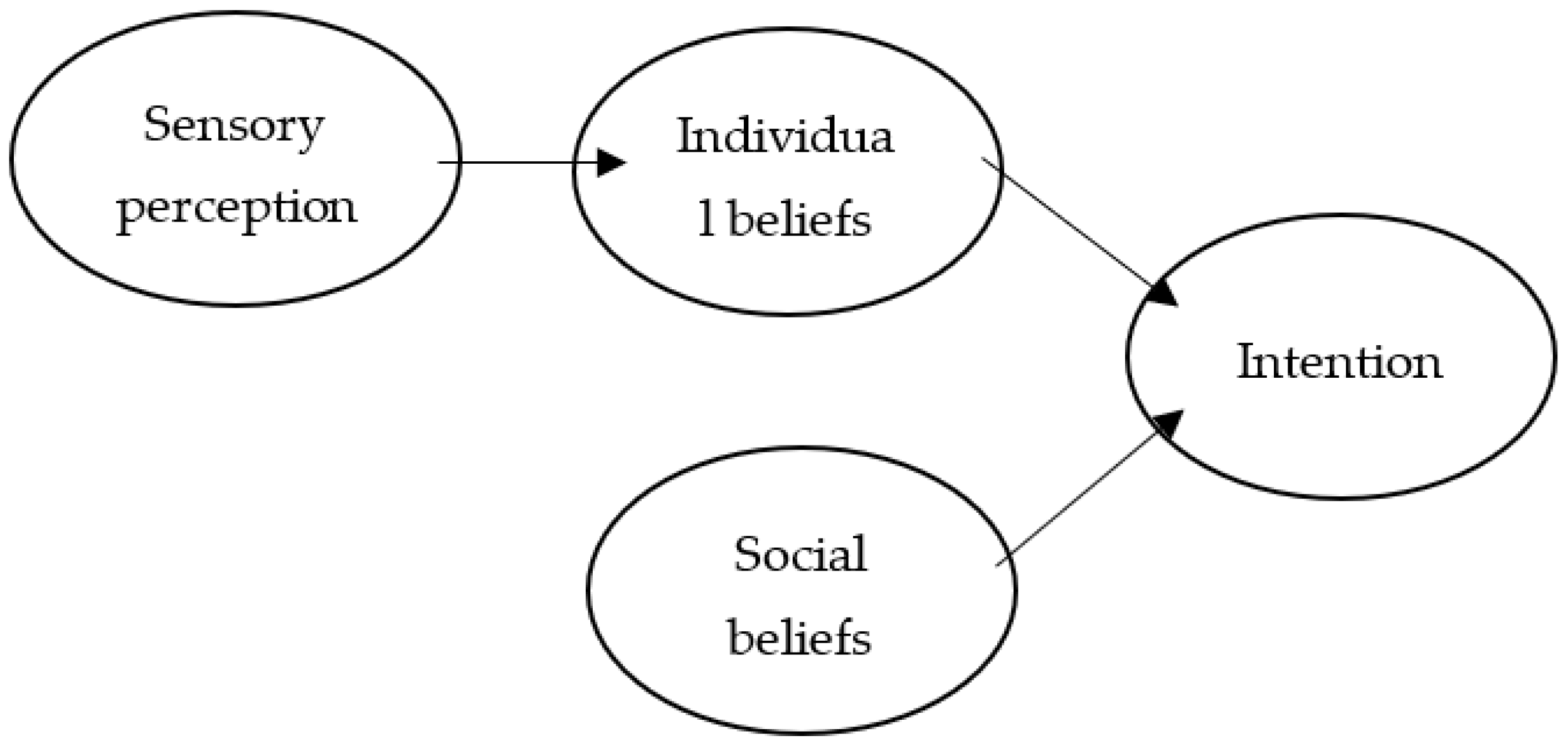
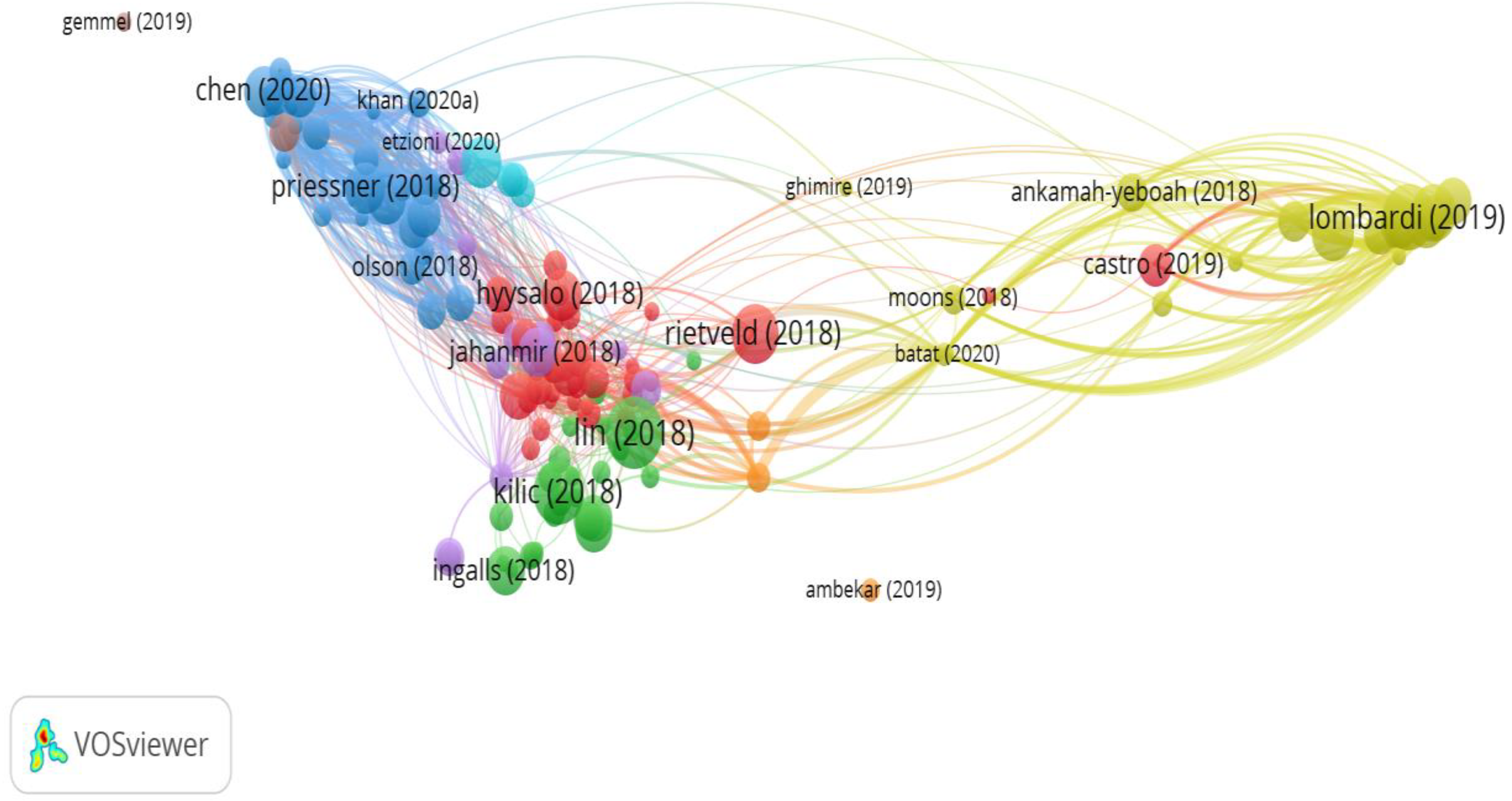
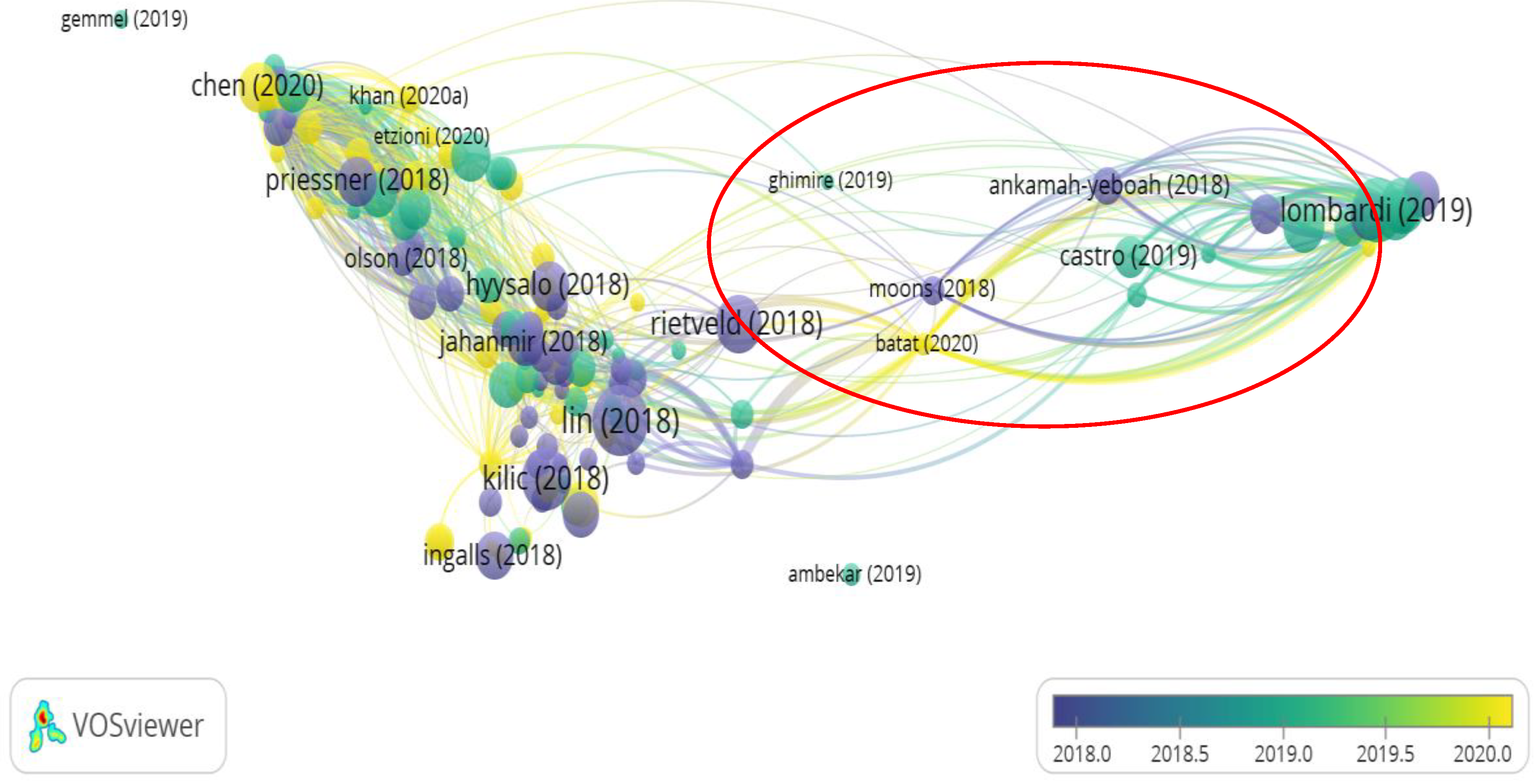
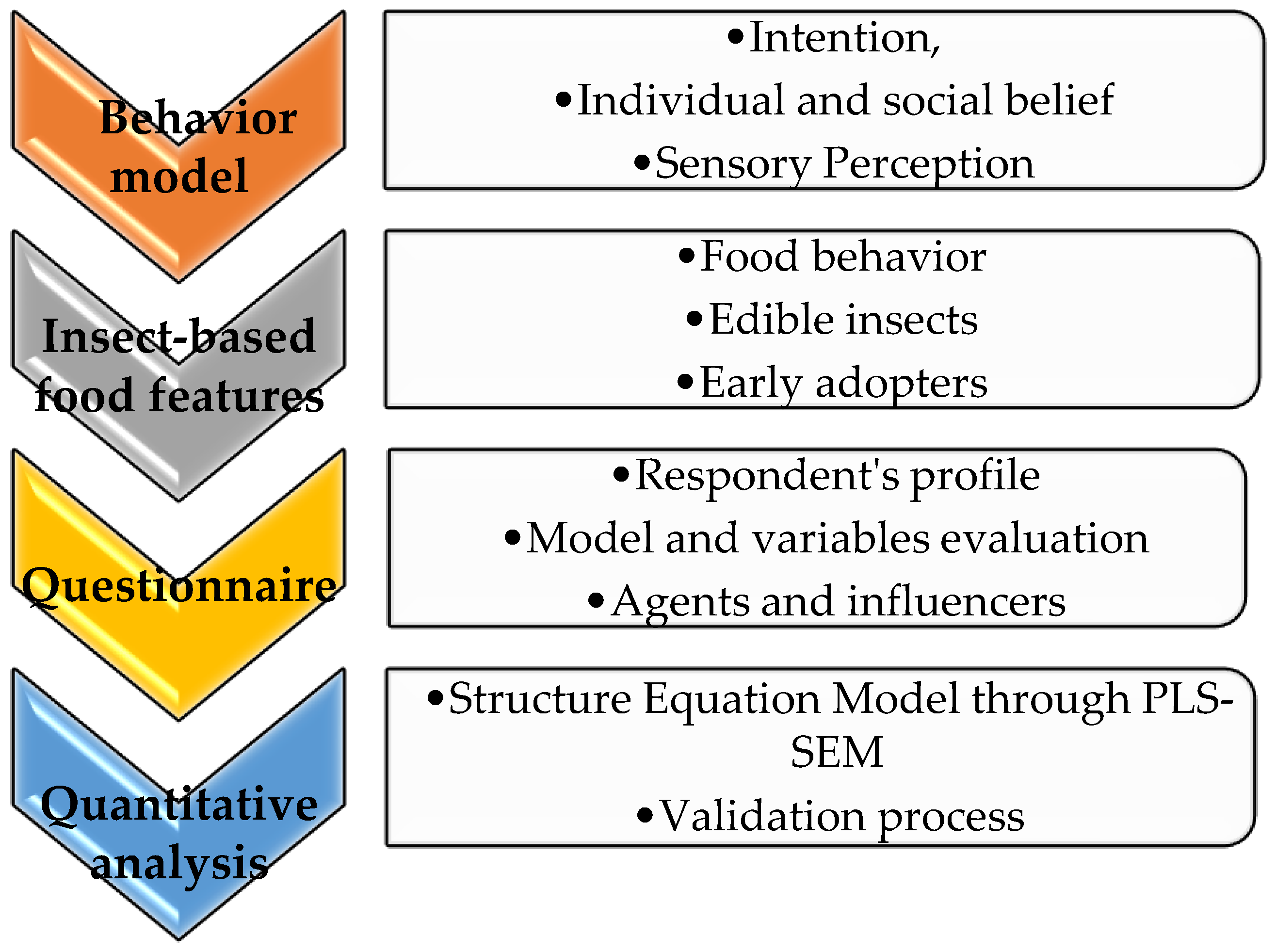
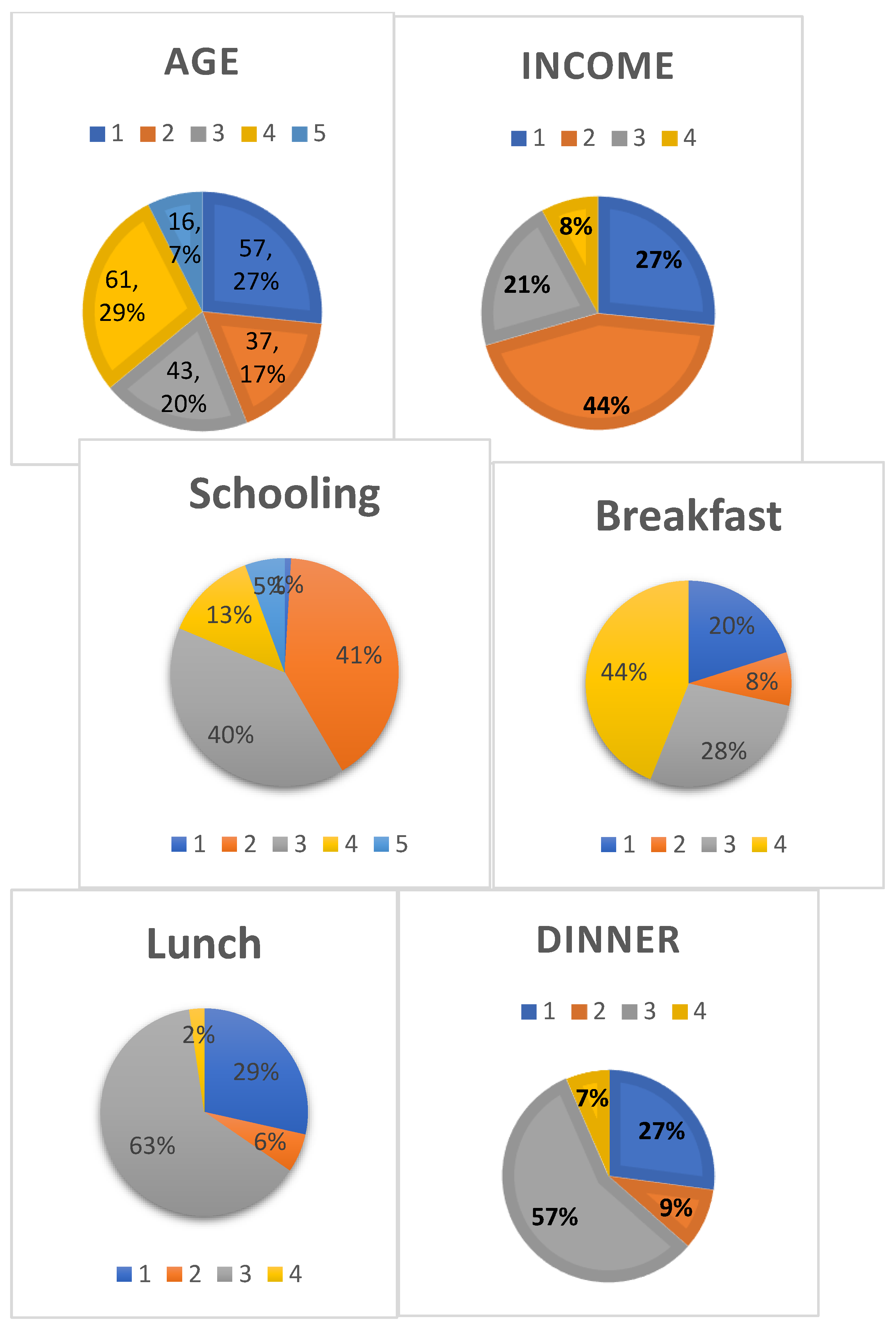
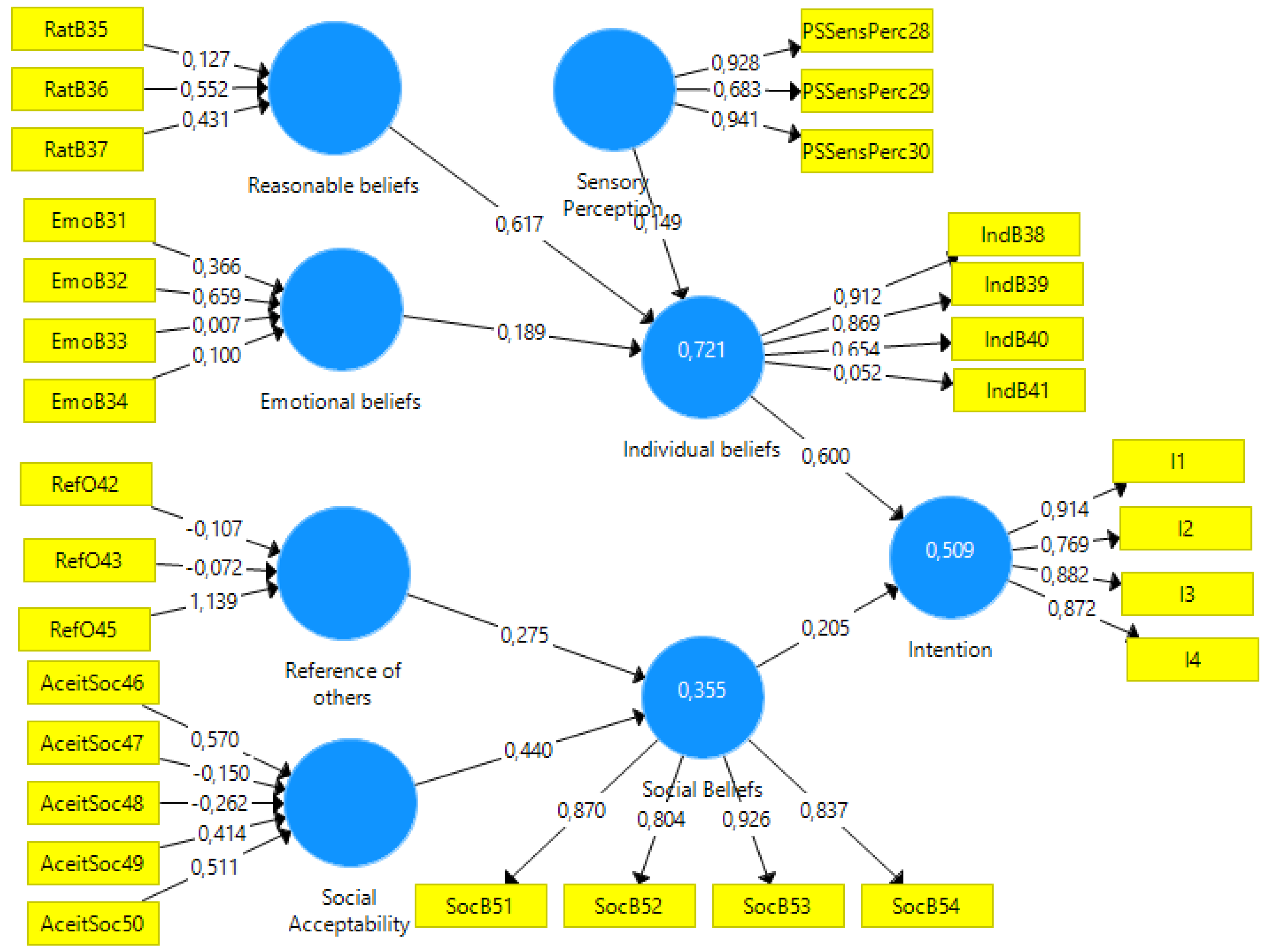
| Variables | Suggestions | ||
|---|---|---|---|
| Intention related to experimentation with new products [16,20] such as insect-based food [8]. | Attitude involves individual beliefs [16]. Attitudes toward eating insect-based foods [8,21] may or may not favour this behaviour [22]. | Reasonable (beliefs based on empirical reality [23]. | Overcome negative emotions [24] and communicate the ecological benefits [25] and positive effects on health of insect-based foods [4,17,24,26,27]. |
| Emotional beliefs: initial perceptions were strangeness and disgust [15]. | |||
| Social beliefs are socialreferents [8]. | Reference to others is the opinion of people who mean something to the individual [19]. | ||
| Acceptability (social communication and social acceptability) depends on the nature of the food [14]. | |||
| Variables | |
|---|---|
| Sensory perception [32] is exponentiated perception through the senses. | Influence of the product features [6,33,34]. |
| Influence of preparation [28,35,36]. | |
| Influence of flavor and related [31,37]. | |
| Influence of smell and related aspects [30,31]. | |
| Influence of product temperature [29,35]. | |
| Influence of the presentation of the shape [28,35]. | |
| Influence of visual aspects: seeing part of the insect is a trigger for disgust [18,21,33,34]. | |
| Insect-Based Food Description |
|---|
| Entomophagy was considered a disgusting practice. Instead, the authors suggested developing early adopters’ practical skills in insect preparation (qualitative methodology) [48]. Insect-based products should communicate all benefits [26]. The market impact of insects on the animal protein value chain should be communicated [49]. Snacking behavior increases the likelihood of consumption of seaweed products [50]. Acceptance increases when insects are transformed into ingredients [22]. A health-conscious, eco-friendly, brave, and insect-based meat alternative was evaluated as a healthy vegetarian alternative [51]. Social factors are a mediating variable between neophobia and personal factors. In addition, communication should stress the health aspects, and sensory perception should be concerned [25]. Health consciousness is a motivator for adopting food such as spirulina-enhanced food [52]. Trying to eat insects increases consumers’ sensory property expectations [53]. In the adoption of insect-based foods, one should consider idiocentric and allocentric factors [54]. Countries with an entomophagy tradition behave differently from those without such a tradition [55]. The impact of post-harvest processing routes of mealworm larvae is important [56]. Beef burgers received higher footprint ratings than vegetarian and insect burgers [57]. |
| Variable | Age | Gender | Schooling | Income | Work | Breakfast | Lunch | Dinner |
|---|---|---|---|---|---|---|---|---|
| Mean | 2.73 | 1.51 | 2.82 | 2.11 | 1.81 | 2.95 | 2.39 | 2.43 |
| Standard error | 0.09 | 0.03 | 0.06 | 0.06 | 0.08 | 0.08 | 0.06 | 0.07 |
| Median | 3 | 2 | 3 | 2 | 1 | 3 | 3 | 3 |
| Mode | 4 | 2 | 2 | 2 | 1 | 4 | 3 | 3 |
| Standard deviation | 1.33 | 0.50 | 0.88 | 0.89 | 1.21 | 1.15 | 0.93 | 0.96 |
| Sample variance | 1.76 | 0.25 | 0.77 | 0.79 | 1.46 | 1.33 | 0.86 | 0.92 |
| Kurtosis | −1.31 | −2.02 | 0.12 | −0.47 | −0.63 | −0.99 | −1.20 | −1.11 |
| Skewness | 0.01 | −0.06 | 0.79 | 0.47 | 1.06 | −0.70 | −0.68 | −0.50 |
| Minimum | 1 | 1 | 1 | 1 | 1 | 1 | 1 | 1 |
| Maximum | 5 | 2 | 5 | 4 | 4 | 4 | 4 | 4 |
| Count | 214 | 214 | 214 | 214 | 214 | 214 | 214 | 214 |
| Confidence level (95.0%) | 0.18 | 0.07 | 0.12 | 0.12 | 0.16 | 0.16 | 0.12 | 0.13 |
| Variable | Definition | Code | Indicator Explanation |
|---|---|---|---|
| 1. Emotional beliefs | Emotional beliefs: initial perceptions were strangeness and disgust [15]. | EmoB36 | The belief that tasting new foods is a gratifying sensation |
| EmoB37 | The belief that tasting new foods is a sensation of pleasure | ||
| EmoB38 | The belief that testing new foods involves a sense of fear | ||
| EmoB39 | The belief that tasting new foods is a sensation to be avoided | ||
| 2. Reasonable beliefs | Reasonable (or rational) beliefs are based on empirical reality [23]. | RatB35 | The belief that new foods should be tried |
| RatB36 | The belief that tasting new foods is an opportunity that cannot be missed | ||
| RatB37 | The belief that new foods should be tested to discover new flavors | ||
| 3. Reference to others | Reference to others is the opinion of people who mean something to the individual [19]. | RefO42 | The influence of family’s opinion |
| RefO43 | The influence of the husband’s/wife’s opinion | ||
| RefO44 | The influence of friends’ opinion | ||
| RefO45 | The influence of colleagues’ opinions | ||
| 4. Social acceptability | Acceptability (social communication and social acceptability) depends on the nature of the food [14]. | AceitSoc46 | The influence of videos published on YouTube |
| AceitSoc47 | The influence of posts on social media | ||
| AceitSoc48 | The influence of news published by journalists | ||
| AceitSoc49 | The influence of the chef’s opinion | ||
| AceitSoc50 | The influence of seeing other people tasting it | ||
| Sensory perception | The senses and memory are connected [32]. Moreover, the state of the matter (liquid, solid) [24,28], temperature (ambient temperature, hot, cold, etc.) [29], appearance (quantity, distribution, color, appearance, etc.) [21], smell (mild/intense, pleasant/unfriendly, etc.) [30,31], and touch (thick/low consistent, solid/liquid, etc.) [33] influence the sensory perception of new foods [7]. Nevertheless, this depends on the nature of the new food [14]. Considering that the tactile, olfactory, visual, and gustative senses affect perception, sensory perception is based on the senses. | PSSensPerc28 | The perception of seeing the product before tasting it |
| PSSensPerc29 | The perception of touching the product before tasting it | ||
| PSSensPerc30 | The perception of smelling the product before tasting it | ||
| Individual belief | Individual beliefs result from reasonable [17] and emotional aspects that influence intention [18]. The individual opinion analyzed the individual beliefs variable. | IndB38 | The belief in trying new foods |
| IndB39 | The belief that trying new foods provides positive sensations | ||
| IndB40 | The fear of trying new foods | ||
| IndB41 | Avoiding unknown foods | ||
| Socialbelief | Social beliefs can be influenced by people around the individual (other references) and by social norms and/or social pressure [19], such as cultural aspects [14]. Therefore, the social beliefs variable was analyzed according to the influence of recommendations from people whom he/she cares about. | SocB51 | Trying new foods that are accepted by the culture |
| SocB52 | Trying new foods that are accepted by the religion | ||
| SocB53 | Trying new foods that are accepted by the society | ||
| SocB54 | Trying new foods that are common in my region | ||
| Intention | The intention is based on individual beliefs and social beliefs and precedes behavior [16]. Therefore, the intention was analyzed according to the individual opinion and the recommendations from people whom he/she cares about. | I1 | Intention to taste new foods |
| I2 | Intention to taste foods that other people have already tried | ||
| I3 | Intention to taste new foods that other people recommend | ||
| I4 | Intention to taste new foods that the people who are closest to them recommend |
| Cronbach’s Alpha | rho_A | Composite Reliability | Average Variance Extracted (AVE) | |
|---|---|---|---|---|
| VIF Minimum Limit | >0.7 | >0.7 | >0.7 | >0.5 |
| Emotional beliefs | 1.000 | |||
| Individual beliefs | 0.674 | 0.877 | 0.757 | 0.504 |
| Intention | 0.920 | 0.923 | 0.920 | 0.742 |
| Reasonable beliefs | 1.000 | |||
| Reference to others | 1.000 | |||
| Sensory perception | 0.887 | 0.913 | 0.892 | 0.738 |
| Social acceptability | 1.000 | |||
| Social beliefs | 0.919 | 0.922 | 0.919 | 0.740 |
| Specific Indirect Effects | |
|---|---|
| Reasonable beliefs -> individual beliefs -> intention | 0.370 |
| Social acceptability -> social beliefs_ -> intention | 0.090 |
| Emotional beliefs -> individual beliefs -> intention | 0.113 |
| Sensory perception_ -> individual beliefs -> intention | 0.089 |
| Reference to others -> social beliefs_ -> intention | 0.056 |
| Emotional Beliefs | Individual Beliefs | Intention | Reasonable Beliefs | Reference to Others | Sensory Perception | Social Acceptability | Social Beliefs | |
|---|---|---|---|---|---|---|---|---|
| Emotional beliefs | 1.000 | 0.688 | 0.551 | 0.690 | 0.242 | 0.487 | 0.449 | 0.421 |
| Individual beliefs | 0.688 | 1.000 | 0.689 | 0.824 | 0.166 | 0.556 | 0.469 | 0.433 |
| Intention | 0.551 | 0.689 | 1.000 | 0.697 | 0.256 | 0.481 | 0.488 | 0.465 |
| Reasonable beliefs | 0.690 | 0.824 | 0.697 | 1.000 | 0.197 | 0.510 | 0.466 | 0.426 |
| Reference to others | 0.242 | 0.166 | 0.256 | 0.197 | 1.000 | 0.200 | 0.357 | 0.432 |
| Sensory perception | 0.487 | 0.556 | 0.481 | 0.510 | 0.200 | 1.000 | 0.431 | 0.365 |
| Social acceptability | 0.449 | 0.469 | 0.488 | 0.466 | 0.357 | 0.431 | 1.000 | 0.538 |
| Social beliefs | 0.421 | 0.433 | 0.465 | 0.426 | 0.432 | 0.365 | 0.538 | 1.000 |
| Emotional Beliefs | Individual Beliefs | Intention | Reasonable Beliefs | Reference to Others | Sensory Perception | Social Acceptability | Social Beliefs | |
|---|---|---|---|---|---|---|---|---|
| Emotional beliefs | ||||||||
| Individual beliefs | 0.688 | 0.710 | ||||||
| Intention | 0.551 | 0.689 | 0.861 | |||||
| Reasonable beliefs | 0.690 | 0.824 | 0.697 | |||||
| Reference to others | 0.242 | 0.166 | 0.256 | 0.197 | ||||
| Sensory perception | 0.487 | 0.556 | 0.481 | 0.510 | 0.200 | 0.859 | ||
| Social acceptability | 0.449 | 0.469 | 0.488 | 0.466 | 0.357 | 0.431 | ||
| Social beliefs | 0.421 | 0.433 | 0.465 | 0.426 | 0.432 | 0.365 | 0.538 | 0.860 |
| Latent Construct | Saturated Model | Estimated Model |
|---|---|---|
| SRMR | 0.062 | 0.081 |
| d_ULS | 1.804 | 3.073 |
| d_G | 0.702 | 0.745 |
| Chi-square | 737.294 | 761.010 |
| NFI | 0.859 | 0.854 |
| Variables | R-Square | R-Square Adjusted | F-Square | ||
|---|---|---|---|---|---|
| Individual Beliefs | Intention | Social Beliefs | |||
| Emotional beliefs | 0.064 | ||||
| Individual beliefs | 0.721 | 0.717 | 0.595 | ||
| Reasonable beliefs | 0.661 | ||||
| Reference to others | 0.102 | ||||
| Intention | 0.509 | 0.504 | |||
| Social beliefs | 0.355 | 0.349 | 0.70 | ||
| Social acceptability | 0.262 | ||||
| Sensory perception | 0.056 | ||||
| Variable | VIF | Variable | VIF | Variable | VIF | Variable | VIF |
|---|---|---|---|---|---|---|---|
| I1 | 2.454 | PSSensPerc28 | 3.138 | AceitSoc46 | 2.709 | RatB35 | 1.866 |
| I2 | 2.824 | PSSensPerc29 | 2.049 | AceitSoc47 | 3.733 | RatB36 | 2.805 |
| I3 | 4.874 | PSSensPerc30 | 3.723 | AceitSoc48 | 2.443 | RatB37 | 2.062 |
| I4 | 3.784 | SocB51 | 3.419 | AceitSoc49 | 2.159 | RefO42 | 3.889 |
| IndB38 | 3.433 | SocB52 | 3.000 | AceitSoc50 | 2.294 | RefO43 | 3.858 |
| IndB39 | 3.375 | SocB53 | 3.345 | EmoB31 | 3.571 | RefO45 | 3.350 |
| IndB40 | 1.519 | SocB54 | 2.654 | EmoB32 | 3.576 | ||
| IndB41 | 1.010 | EmoB33 | 1.753 |
| Original Sample (O) | Sample Mean (M) | Standard Deviation (STDEV) | T Statistics (|O/STDEV|) | p-Values | |
|---|---|---|---|---|---|
| Emotional beliefs -> individual beliefs | 0.181 | 0.194 | 0.070 | 2.602 | 0.009 |
| Individual beliefs -> intention | 0.533 | 0.534 | 0.059 | 8.999 | 0.000 |
| Reasonable beliefs -> individual beliefs | 0.584 | 0.579 | 0.063 | 9.316 | 0.000 |
| Reference to others -> social beliefs | 0.264 | 0.268 | 0.060 | 4.374 | 0.000 |
| Sensory perception -> individual beliefs | 0.129 | 0.126 | 0.055 | 2.332 | 0.020 |
| Social acceptability -> social beliefs | 0.422 | 0.442 | 0.056 | 7.498 | 0.000 |
| Social beliefs -> intention | 0.221 | 0.221 | 0.064 | 3.455 | 0.001 |
Publisher’s Note: MDPI stays neutral with regard to jurisdictional claims in published maps and institutional affiliations. |
© 2022 by the authors. Licensee MDPI, Basel, Switzerland. This article is an open access article distributed under the terms and conditions of the Creative Commons Attribution (CC BY) license (https://creativecommons.org/licenses/by/4.0/).
Share and Cite
Martins, O.M.D.; Bucea-Manea-Țoniș, R.; Bašić, J.; Coelho, A.S.; Simion, V.-E. Insect-Based Food: A (Free) Choice. Sustainability 2022, 14, 7186. https://doi.org/10.3390/su14127186
Martins OMD, Bucea-Manea-Țoniș R, Bašić J, Coelho AS, Simion V-E. Insect-Based Food: A (Free) Choice. Sustainability. 2022; 14(12):7186. https://doi.org/10.3390/su14127186
Chicago/Turabian StyleMartins, Oliva M. D., Rocsana Bucea-Manea-Țoniș, Jasmina Bašić, Ana Sofia Coelho, and Violeta-Elena Simion. 2022. "Insect-Based Food: A (Free) Choice" Sustainability 14, no. 12: 7186. https://doi.org/10.3390/su14127186
APA StyleMartins, O. M. D., Bucea-Manea-Țoniș, R., Bašić, J., Coelho, A. S., & Simion, V.-E. (2022). Insect-Based Food: A (Free) Choice. Sustainability, 14(12), 7186. https://doi.org/10.3390/su14127186









